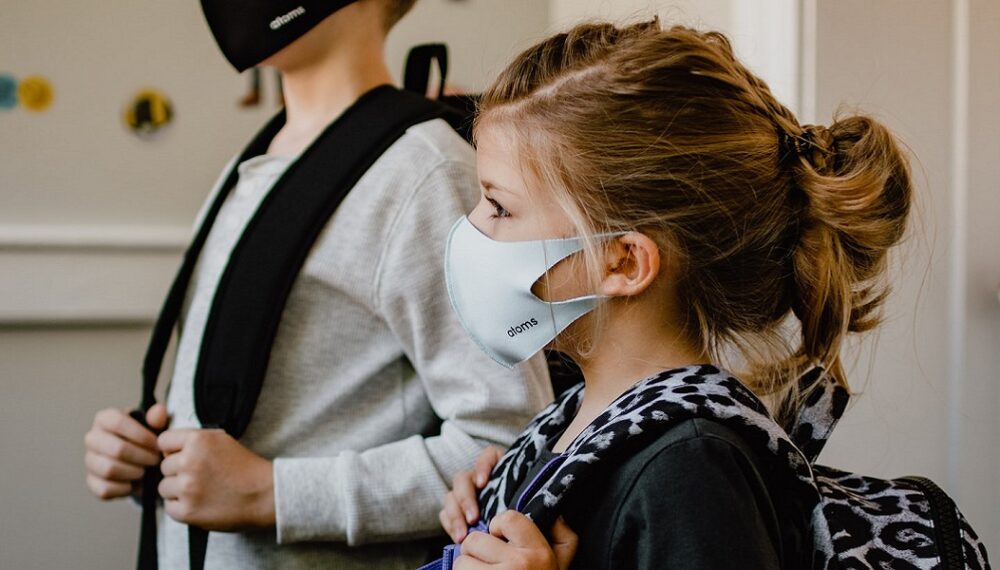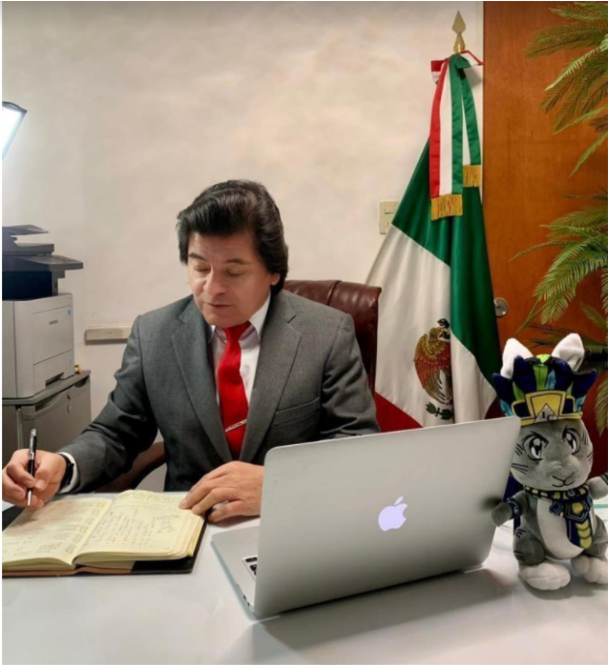Calmécac Institute in San Luis Potosi: A Digital Transformation During the Pandemic

The students, parents, and teachers of the Calmécac Institute in San Luis Potosi, Mexico, who have been using ONE and NEO since August 2020, have successfully overcome the education challenges brought on by the health crisis. By maintaining ties between the school and students’ families, the institute was able to continue teaching children throughout the difficult lockdown period. Principal Arturo Gámez Segovia reflects back on his experience surrounding the Calmécac Institute’s digital transformation during the pandemic.

ONE and NEO: What do you think was the hardest part of this project?
Arturo Gámez Segovia, Principal of the Calmécac Institute (Mexico): Dealing with time constraints, which became even more difficult to manage during the pandemic, and choosing a platform that could adapt to fit our needs were the main challenges. We teach everyone from preschoolers to high school students and wanted to incorporate new technologies and educational apps. We also had to find a reliable Internet provider and create a training program that could quickly onboard teachers, coordinators, managers, administrative staff, and all other members of our personnel. Despite these difficult circumstances, our staff has always been quick to adapt and eager to keep improving.
Based on your experience, what are the main factors to consider when carrying out a complete digital transformation in your school’s teaching strategy?
Having experience with using IT and communication technologies is one of the most important factors—not to mention being well versed in teaching and developing remote teaching methodologies. It is also important to ensure that everyone feels a part of the team and to include every single member of the Calmécac Institute.
I’d say those factors that I just mentioned are key points to take into consideration, but that it’s especially critical to stay focused on the most important stakeholders in this process, i.e. students, parents, and teachers, because it is by working as one that we were able to tackle the situation we are facing today.
In general, what method or strategy did you adapt that allowed your teachers to achieve these results?
We organized a number of workshops, conferences, and refresher and continuing education classes. We also practiced a lot, which helped us learn from our mistakes. That’s just a few examples of what we did to get such great results so far. Of course, none of this would have been possible without the hard work our teachers and faculty put into adapting.
In terms of resources (both material and human), what did you do and what worked the best to promote your project?
From the start, we knew that we had to invest in technology. We needed to source equipment, software, and qualified professionals; update and purchase the equipment, network technology, and data infrastructure required to run the platform; buy the necessary tools and teaching apps; and transition towards digital processes and services that would allow us to bring the classroom to each and every student.
This was a huge challenge that helped us not only grow as an institution but also provide a high-quality service to our students.
Did you have to put new resources in place?
Yes, in fact. We redesigned our classes and adapted them to fit the new and emerging model of online education. Some of the most important resources we started using included the applications available through Open Digital Education’s platform and the programs that our teachers learned to use, which play a crucial role in our teaching model.
Centralizing your video calls for online classes was an important step. How did you do that and where did you get the idea?
From the beginning, we knew that video calls would be the key to an effective transition during this period of change. We looked for ways to provide our services, from teaching to methodology, directly to our students in their homes. We started by testing different programs and applications to find the ones that met our needs the best. We organized courses that simulated the remote teaching process before the start of the school year. All of this led to the approach and methods we use today.
One decision that made a difference was the choice to monitor teachers during class. What was the goal of this strategy and how did it work in practice?
The main reason has always been the safety of our students and teachers. We decided to permanently monitor virtual classes to be able to respond to any situation that could generate risk. This strategy also let us continuously assess our students’ learning, which helped us identify the areas where there was a significant lack of progress and in turn work to improve those areas.
In terms of statistics, how many teachers are monitored on a daily basis?
Over 40 teachers simultaneously.
How many users sign in every day?
It isn’t easy to give an exact number, but it can range from 900 to 1,000. During the holidays, there are maybe 800 in total.
How did the teachers manage this change?
It wasn’t easy, but all the staff worked really hard during their training. A number of sessions were organized so we could get used to an app or a new digital tool. Naturally, some sessions were harder than others, but we were able to master these tools after lots of practice.
Overall, how satisfied are you with the platform and its results?
We are really very happy with the platform because it can be adapted to meet our educational needs. In other words, it’s a platform that is really easy to use and understand for parents, students, and teachers.
It also has apps that are really helpful and user friendly. Even when classes were remote and held during the pandemic, parents and students were much faster to use the platform and adapt to this digital transformation than we ever anticipated. Obviously, the platform helps us a lot because it is simple, available in our language, and is similar to the operating system of a smartphone. However, the advice given to students and teachers plays a huge role as well since the platform doesn’t do the work on its own and has a bit of a learning curve.
We are more than satisfied!
What made you want to work with ONE and NEO?
First off, the kindness and trustworthiness of the CSTEC, ONE, and NEO team. The staff was responsible and well versed in what we were going through in the field of education and digital transformation during the pandemic.
And of course, like I’ve already mentioned, how easy, fast, and simple the platform is to use for students and teachers. Had we not been in the middle of a pandemic, we might have been able to teach everyone how to use and manage the platform in just a few days, but we had to deal with a situation where we were starting from zero. Now, we can continue teaching students thanks to this easy-to-use platform and the organizational skills of the Calmécac Institute, ONE and NEO, and CSTEC.
With respect to the use of ONE and NEO, what are the most important apps in your classes and how do you use them?
Well, that’s a tough question to answer because every app is designed with a specific goal in mind and can be very useful if it is used correctly.
From my perspective, the apps can’t really be ranked against each other since it’s important to use every one appropriately, for a specific purpose, in a specific context, and at the right time. I think that’s the key to success when it comes to using the platform properly. However, some apps are logically used more often than others, like the Mail app; the Multimedia Notebook, which can be used to publish content that’s important to students; and the Blog, which is great for sharing information.
Finally, could you share with us your overall feelings about teaching and the ONE and NEO project at Calmécac Institute?
That’s hard for me to sum up because this digital transformation came with a number of new lessons and experiences thanks to ONE and NEO as well as the teachers, parents, and students.
Regardless, I can say (with much satisfaction and without a moment of hesitation) that I do not regret placing my trust in my staff at the Calmécac Institute and at CSTEC and Open Digital Education. Since the start of our collaboration, we knew that this process wouldn’t be easy, but we also knew that we wouldn’t be left to solve our problems on our own. We were able to overcome this challenge through our joint efforts—just like we’ve always done up to now.
comments
Add comment